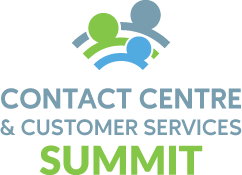5 Minutes With… livepro CEO Brad Shaw

In the latest instalment of our contact centre industry executive interview series we spoke to livepro CEO Brad Shaw about knowledge management, why we need to move one from physical documentation in order to empower staff and deliver better customer experience, plus how artificial intelligence will impact the sector… Tell us about your company, products […]
Balancing economics with environmental concerns in the world of customer service

Can businesses react to the current economic landscape and ‘do more with less’, while still minimising environmental impact, accelerating growth and delivering excellent customer service? We asked Tony Lorentzen (pictured), Nuance’s SVP of Intelligent Engagement… How are modern technologies transforming the customer experience, especially within call centres? Despite many consumers today preferring to communicate with […]
5 Minutes With… Jay Patel VP & GM, Webex CPaaS at Cisco

In the latest instalment of our contact centre industry executive interview series we spoke to Jay Patel, VP & GM at Webex CPaaS at Cisco, about the firm’s latest technologies, keeping up with changes in customer behaviour and the opportunities that presents, and the rise and rise of conversational commerce… Tell us about your company, products, […]
Getting to know you: Paula Constant, Woven CEO

With a creative workforce, tech know-how and a bespoke approach, Woven is transforming customer-services. We caught up with CEO Paula Constant to find out more about the secrets of the company’s success… Woven is on a mission to deliver excellent customer service. They provide a range of premium companies with bespoke people- and technology led […]
5 Minutes With… Sabio Group’s Stuart Dorman

In the latest instalment of our contact centre industry executive interview series we spoke to Stuart Dorman, Chief Innovation Officer at Sabio Group, the customer experience (CX) digital transformation specialist, about the company, the ongoing challenges posed by COVID-19, industry opportunities, new technology and why voice will remain king… Tell us about your company, products […]
5 Minutes With… TalkDesk’s Jay Gupta

In the latest instalment of our contact sector industry executive interview series we spoke to Jay Gupta, Global Director of Product Marketing at Talkdesk, about the company, the ongoing challenges posed by the pandemic, the importance of operational efficiencies and the potential for artificial intelligence… Tell us about your company, products and services? Talkdesk was founded in 2011 by Tiago Paiva. He […]
5 Minutes With… Davies Group’s Leon Boland

In the latest instalment of our contact centre industry executive interview series, we spoke to Leon Boland, Director of Learning Experiences Questions (Contact Centre) at Davies Group, about the company, the ongoing impact of COVID-19, opportunities with new technology and the importance of operational KPIs… Tell us about your company, products and services. We are a […]
5 Minutes With… Erik Delorey, Empirix

In the latest installment of our contact centre industry executive interview series, we spoke to Erik Delorey, Product Marketing Manager and Solutions owner for the Hammer Test Automation product line at Empirix, about the company, industry challenges and opportunities, new technology and the wisdom of Douglas Adams… Tell us about your company, products and services. […]
5 Minutes With… RingCentral’s Max Ball

In the latest instalment of our contact centre industry executive interview series, we spoke to Max Ball, Director of Contact Centre Product Marketing at RingCentral, about his company, the challenges posed by COVID-19, industry opportunities and priorities for 2021 and beyond… Tell us about your company, products and services. RingCentral is a market-leading business communications […]
5 Minutes With…. Jabra EMEA North MD Nigel Dunn

In the latest instalment of our contact centre industry executive interview series, we spoke to Jabra EMEA North‘s Managing Director Nigel Dunn (pictured) about the company, the ongoing challenges the sector faces as a result of COVID-19, market opportunities and the impact of new technology… Tell us about your company, products and services. Jabra is […]

